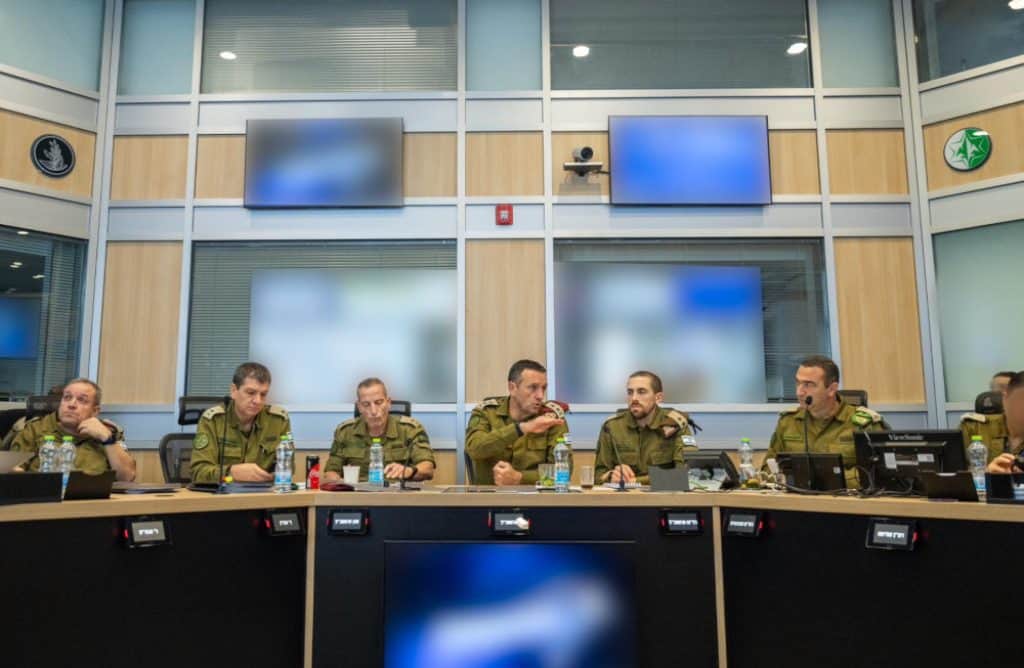
Hezbollah targeted northern Israel with a series of rocket and drone threats on August 15, continuing daily attacks the group says are separate from its threats to retaliate for an Israeli airstrike in Beirut last month.
The IDF targeted Hezbollah commander Fuad Shukhr in late July, and Hezbollah has threatened a major retaliation for the killing for two weeks. The IDF conducted the strike on Shukhr in response to a Hezbollah rocket attack that killed 12 civilians in Majdal Shams on July 27. Hezbollah’s daily attacks on northern Israel, which began on October 8, 2023, have now included 7,500 rockets and 200 drone attacks.
Throughout August 15, sirens sounded in communities in northern Israel, beginning at 9:11 am and continuing throughout the day. A mix of rocket and drone threats affected communities near the Mediterranean and near Kiryat Shmona in the Huleh Valley in the eastern Galilee.
“Following the sirens that sounded at 14:10 in the area of the Golan Heights, one suspicious aerial target was intercepted after crossing from Lebanon into Israeli territory. No injuries were reported,” the IDF said about one of the incidents. In another incident, five rockets were fired near the Israeli community of Shamir, which overlooks the Huleh valley. According to the IDF, Israel’s Iron Dome air defense system intercepted many of the projectiles.
Hezbollah claimed it expanded the range of its attacks to include Shamir. In a statement to the pro-Iranian al-Mayadeen media, the group said that it was targeting the area in response to Israeli attacks on areas in southern Lebanon. Hezbollah also stated the rocket attacks were done to support Hamas in Gaza.
Later in the day, IDF Spokesperson Rear Admiral Daniel Hagari addressed Israel’s continued high state of alert. The country is preparing for a possible Iranian attack, as well as attacks by Iranian-aligned groups such as Hezbollah. Hagari said that there were no changes in instructions given to Israeli civilians by the IDF’s Home Front Command. This statement indicates there are no special emergency instructions, despite two weeks of increased tensions with Iran and Iranian-backed groups.
“We are prepared and at peak readiness offensively and defensively, and we will act according to the instructions of the political echelon. The Israeli Air Force, the Northern Command, the Intelligence Directorate (J2), the Operations Directorate (J3), and the Home Front Command are all operating around the clock—in terms of defense and offense,” Hagari said.
Hagari also stated Israel was conducting a situational assessment this week. “At this stage there is no change in the Home Front Command defense policy. If there is a change to our guidelines, we will update immediately. We have our fingers on the pulse. The public’s alertness and vigilance is important, and we urge you to continue to follow the guidelines on the IDF and the Home Front Command official platforms.”
As part of Israel’s preparation for a possible escalation, the IDF continued drills in northern Israel. These monthly trainings include different units involved with securing the northern border. The IDF released footage of the Israeli Navy conducting a joint drill with various ground forces over recent days as part of preparations for a possible escalation. The drill included the IDF’s 146th Division, which is based in the north, police units, and Rambam hospital staff in Haifa.
Hezbollah’s actions on August 15 illustrate how the group continues to slowly escalate attacks on Israel and expand their range while threatening much broader attacks. Hezbollah’s deputy secretary-general, Naim Qassem, told Al-Mayadeen that any attack related to the killing of Shukhr would be separate from the group’s current daily attacks, which it has linked to the fighting in Gaza. In essence, Hezbollah has laid out a two-pronged policy. One prong supports Hamas in Gaza, and these daily attacks could cease if there is a ceasefire. The second prong is a threatened retaliation for Israel’s July airstrike.
The IDF also carried out strikes in Lebanon on August 15. Israeli aircraft hit Hezbollah military structures in Yaroun and Ayta ash Shab in southern Lebanon, the IDF said. Israeli artillery also fired at an area near Deir Mimas, also in southern Lebanon.







